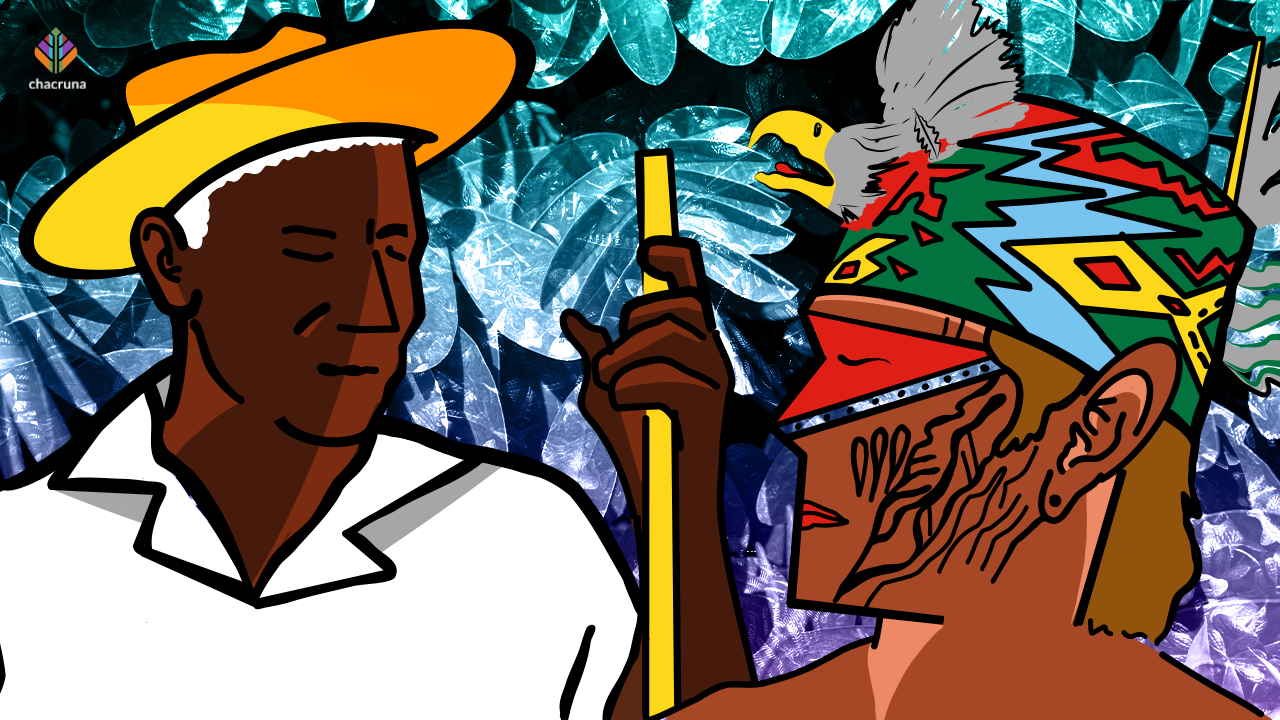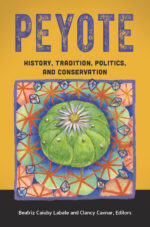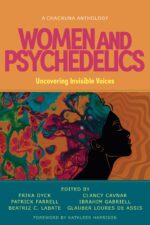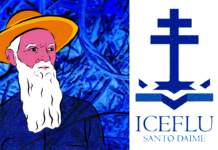- Forest Medicines and Global Alliances Between the Yawanawá People and Santo Daime - August 9, 2024
- A Homosexual Marriage Experience in Santo Daime - October 22, 2019
- The Muká Diet of the Yawanawá Indigenous People in Acre, Brazil - May 28, 2018
- Forest Medicines and Global Alliances Between the Yawanawá People and Santo Daime - August 9, 2024
- Guarani Shamanism in the University - May 2, 2023
- Esther Jean Langdon: Half a Century of Research About Shamanism and Ayahuasca - December 15, 2021
In recent decades, contemporary shamanic networks connecting diverse Indigenous groups and representatives to several non-Indigenous social actors, such as spiritualist groups, NGOs, governmental institutions, anthropologists, have been expanding in Brazil. Many of these networks are defined by the consumption of a set of substances called “forest medicines,” among which ayahuasca plays a central role. They also often include a more or less standardized set of ritual practices, aesthetic expressions, and objects associated with generic images of shamanism and indigeneity.
The Yawanawá are Indigenous people from the Pano linguistic family that live in the state of Acre, in the Brazilian Amazon. Since the 2000s, they have experienced an extensive process of cultural revitalization. This process is connected with the implementation of several sustainable development projects in search of external resources and to an increase in interest in their shamanic knowledge and practices.
Recently, the Yawanawá have opened dialogues and alliances with Santo Daime churches and with other non-Indigenous social actors as part of this broader movement. In our Anthropology of Consciousness article, “‘Forest Medicines’ Kinship Alliances, and Equivocations in the Contemporary Dialogues between Santo Daime and the Yawanawá,” we suggest that these alliances can be seen as a structural continuity of the Yawanawá mode of establishing relationships and producing kinship with the outer worlds. We established our findings on a particular case study of spiritual and kinship alliances between Yawanawá people from the Terra Indígena (TI, Indigenous Reservation) Rio Gregório (Acre) and an Céu do Mar, an urban and expansionist Santo Daime church based in Rio de Janeiro. The article is based on two years of participant observation conducted at Céu do Mar, a 20-day visit to the TI Rio Gregório, and eight interviews conducted both with daimistas and Yawanawá. Our reflection is grounded in extensive fieldwork and intends to contribute to the debate about the particular case of the alliances between daimistas (people who are members of the Santo Daime church) and Yawanawás, one among the many alliances that are being produced between this Indigenous group and several non-Indigenous external agents. The article also intends to contribute to a broader discussion about the current expansion of contemporary shamanic networks in Brazil and abroad.
In the shared rituals that are part of the alliance between Santo Daime and the Yawanawá in Rio de Janeiro, and in the Indigenous festivals held in TI Rio Gregório, especially in Nova Esperança and Mutum villages, people consume ayahuasca and a set of substances designated as “forest medicines,” which include rapé, sananga, kambô or kapu, and muka, among others. Each one of the groups and social actors that compose the contemporary shamanic networks employs and interprets these substances in culturally specific and distinct ways, and their uses are reinvented in urban settings.
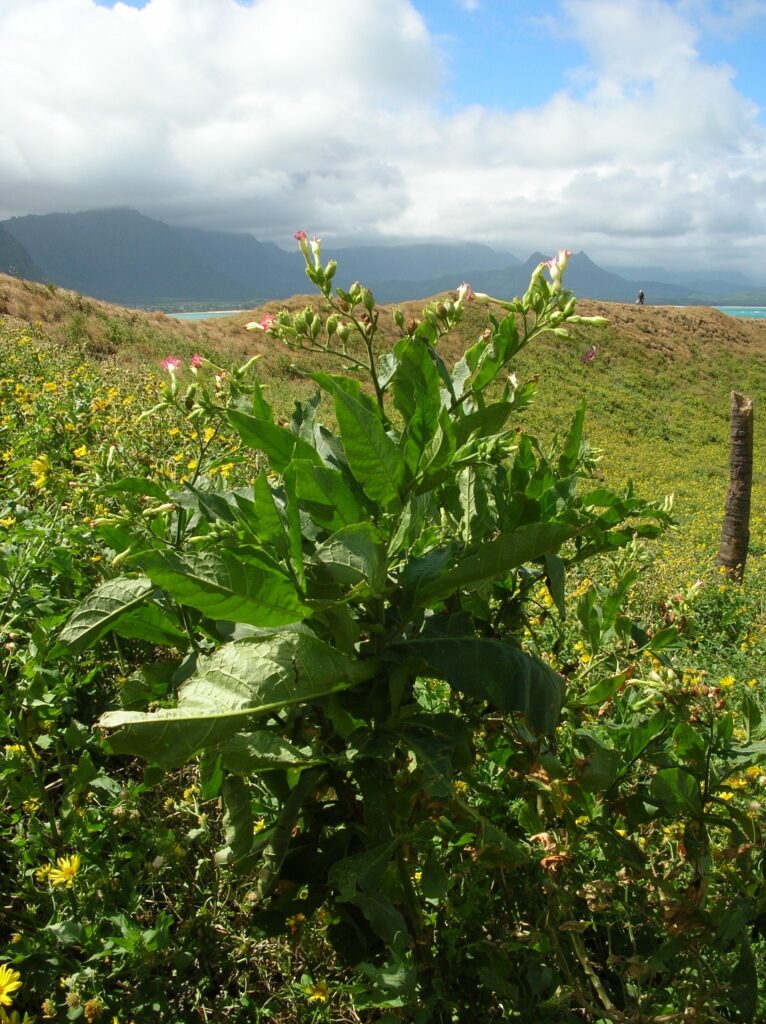
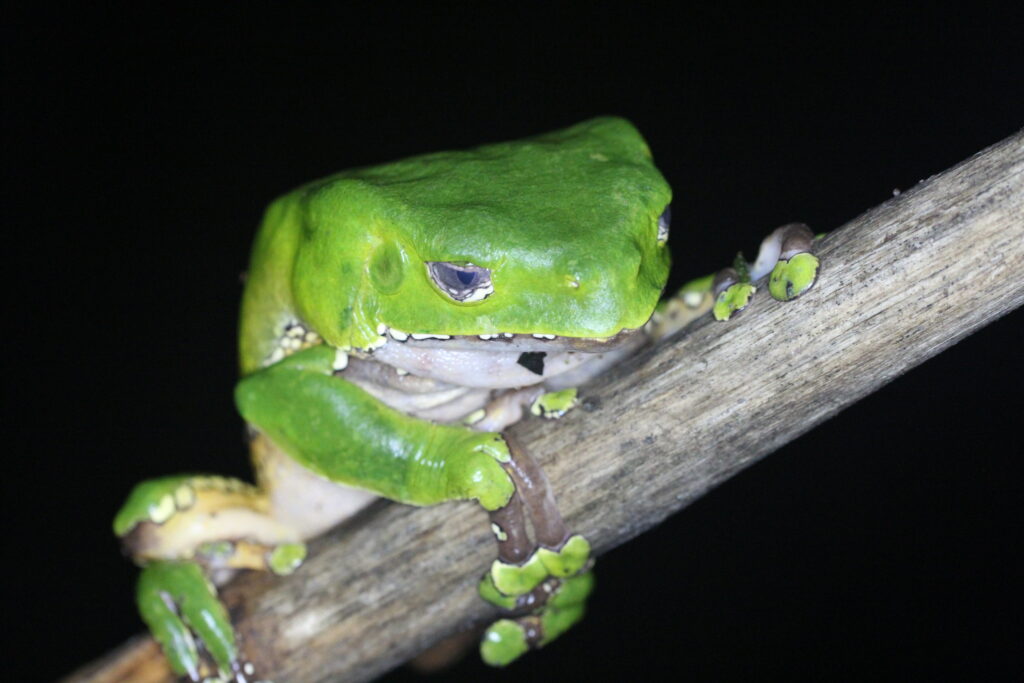
Forest Medicines
Rapé (tobacco snuff) is usually made of tobacco (Nicotiana tabacum) which is grounded, sifted, and mixed with bark from trees and ashes.
Sananga (Tabernaemontana undulate) is a liquid extracted from the juice of a root, popularly known as the eye drops of the forest. The Yawanawá perceive sananga as a substance that contributes to an opened-up and enhanced vision. It is also employed to send away laziness and panema, a concept that in the broader Amazonian landscape is connected primarily to bad luck in hunting.
Kambô or kapu is a secretion extracted from the Phyllomedusa bicolor frog. Among Indigenous peoples such as the Katukina, Yawanawá and Huni Kuin, kapu is usually employed as an invigorator and a stimulator for hunting.
Muká is a bitter potato used in the Yawanawá shamanic dietas as a means to acquire knowledge and shamanic power.
From the Yawanawá perspective, we intend to describe the elements of this alliance as a process of “domestication” or “familiarization” of non-Indigenous actors, and specifically of the daimistas, which are seduced and habituated to the Yawanawá ritual practices, substances, and knowledge. The Yawanawá have a social logic that is different from that of the other Pano groups, and that can be seen as a long-duration structure. This social logic is based on matrimonial alliances with other groups, aiming to create exchange networks and thus expand the Yawanawá influence. In this context, the Indigenous leaders often marry “strangers” or non-Indigenous people. We argue in our article that the particular case of the alliance between the Yawanawá of TI Rio Gregório and the heads of Céu do Mar represents a continuity of this structural logic that produces the Yawanawá bond.
We try to understand how the process of “habituating” non-Indigenous people, and especially the daimistas, takes place in the shared rituals conducted both in the city and in the forest.
We try to understand how the process of “habituating” non-Indigenous people, and especially the daimistas, takes place in the shared rituals conducted both in the city and in the forest. We also track how the daimistas are incorporated and inserted in a Yawanawá exchange system that involves multiple regimes of value. Further, we attempt to put in evidence the dialogues and equivocal translations that take place between the daimistas and the Yawanawás, showing how these dialogues involve conflicts, heterogeneity, and asymmetric power relationships.
Céu do Mar is part of an eclectic, experimentalist and expansionist Santo Daime branch popularly known as “linha (branch) do Padrinho Sebastião.” In general, Santo Daime encompasses two main divisions. On the one hand, there are several small groups that self-identify as Alto Santo and that are practically restricted to the state of Acre in the Amazonian region. These groups are mainly non-expansionist and are often associated with representations of “tradition” and “authenticity” in the public debates involving the Brazilian ayahuasca religions. On the other hand, the branch founded by Sebastião Mota de Melo or Padrinho Sebastião and represented by the Church of the Eclectic Cult of the Universal Flowing Light (Igreja do Culto Eclético da Fluente Luz Universal, ICEFLU) was the main group responsible for Santo Daime’s national and international expansion. However, over the last few decades, this institution has been losing its representative capacity. Thus, more and more Santo Daime churches and centers are becoming autonomous, although they maintain a spiritual and affective connection to Padrinho Sebastião’s memory. This means that even though these churches are not formally associated with ICEFLU, they represent themselves and are publicly seen as a part of the linha do Padrinho Sebastião.
Céu do Mar was the first Santo Daime church founded outside of the state of Acre. It was created in Rio de Janeiro in 1982 by the psychologist Paulo Roberto. Although currently Céu do Mar is institutionally independent of ICEFLU, both organizations are still tightly connected by spiritual and kinship bonds. Céu do Mar’s history is characterized by several adaptations of the daimista rituals to Rio de Janeiro’s cultural context and to the personality of its leader, Paulo Roberto, who has a trajectory both as a psychologist and as a Kardecist Spiritist. Thus, since Céu do Mar’s founding there have been a series of transformations and innovations in the daimista ritual practices conducted in this church.
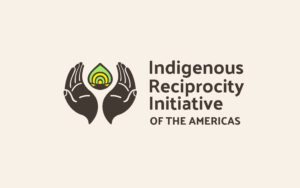
Discover the Indigenous Reciprocity Initiative of the Americas
“Eclecticism” is a native category often employed by the members of Padrinho Sebastião’s branch. It is present in the name of the official institution that represents this branch — Church of the Eclectic Cult of the Universal Flowing Light — and calls attention to the openness that has always characterized this religious group. Since its beginning, Padrinho Sebastião’s branch has had plural and eclectic features, contributing to its flexibility and to the dynamic insertion of ritualistic practices from other religions and spiritual groups. From the 1970s and 1980s, several important elements from Spiritism and the Afro-Brazilian religions became a part of Santo Daime’s cosmology and religious practices.
In his classical work, Alberto Groisman proposed to use the term eclecticism to define this branch of Santo Daime. According to him, eclecticism makes possible the coexistence of diverse cosmological systems and constitutes a totalizing system that encompasses several life aspects. This category indicates an openness that is not common among the other Brazilian ayahuasca religions. Glauber Assis and Bia Labate define this process as structural miscibility, highlighting the porosity, psychoactivity, and musicality of this religious branch.
Padrinho Sebastião’s branch can be seen as an emergent religion that is open to otherness and to changes. This enables the existence of many “daimes,” meaning that each center has particular variations and adaptations that are connected with the local settings and with the trajectories of its heads and members. A well-known example of this openness involves the introduction of elements from the Afro-Brazilian religions, and especially from Umbanda (such as spiritual entities, chants, and mediumship) in some specific daimista rituals. On the one hand, these elements have become very important among some churches connected to this expansionist branch. On the other, it is important to highlight that there is no consensus about these ritual transformations, and until today this issue represents an important source of conflicts and controversies in the broader field of the Brazilian ayahuasca religions.
many Santo Daime churches become “indigenized,” conducting rituals that include Indigenous references and the “forest medicines,” such as rapé, tobacco, sananga, and kambô.
The growth of the contemporary shamanic networks in Brazil has been accompanied by an increase in anthropological studies on this topic. In this context, some Indigenous groups that are held as traditional ayahuasqueiros, such as the Yawanawá and the Huni Kuin, have experienced a revival of their shamanic practices and resumed the consumption of ayahuasca influenced by their dialogues with members of the Santo Daime churches. There are also reports about Indigenous groups that did not previously employ ayahuasca and that have started to use the beverage influenced by the dialogues with the ayahuasca religions. Even among the Indigenous groups who did not previously consume ayahuasca, this beverage is often connected to a process of reclaiming tradition and to a revival of shamanic practices. At the same time, many Santo Daime churches become “indigenized,” conducting rituals that include Indigenous references and the “forest medicines,” such as rapé, tobacco, sananga, and kambô.
Based on our case study about the alliances established between the heads of Céu do Mar and some Yawanawá leaders, we suggest that these dialogues involve multiple translations that produce emergent categories. As we have seen, the transformations that result from these processes are multidirectional. They encompass both Indigenous and non-Indigenous groups and actors, which have very different interests, discourses, and perspectives. Recent research on the topic indicates that in Brazil, the ayahuasca religions, and especially Santo Daime, have an important role in the emergence of contemporary shamanic networks. Thus, it is possible to say that Santo Daime is currently part of broad and diverse networks composed of multiple human and more-than-human actors.
However, these alliances also have limits regarding the heterogeneity of perspectives and the equivocal translations present in them. Equivocation is a type of ambiguity that arises when a statement or phrase can have more than one meaning. In anthropology, equivocation can be seen as evidence of different perspectives at stake. In our article, we suggest that equivocation occurs in the alliances between the Yawanawá and the daimistas. These dialogues are characterized by heterogeneity and different knowledge systems, often leading to conflicts and dead ends.
In our article, we suggest that equivocation occurs in the alliances between the Yawanawá and the daimistas. These dialogues are characterized by heterogeneity and different knowledge systems, often leading to conflicts and dead ends.
In this article, we describe the relationships involving domestication or familiarization and the intercultural equivocations among daimistas and Yawanawás. On the one hand, the Yawanawá seek to produce kinship by employing seduction and shared ritual substances and to draw non-Indigenous people into their community. From the Yawanawá’s point of view, non-Indigenous bodies are transformed and they become partially Yawanawá. They also are inserted in circuits that involve gift exchange and multiple regimes of value, including kinship, ritual, politics, and economy. On the other hand, the daimistas experience the Yawanawá shamanism and the consumption of “forest medicines.” This leads to the performances of “becoming Indigenous” or “becoming Yawanawá”, characterized by adaptations and reinventions of elements from the Yawanawá shamanic system. The alliances with the Yawanawá are also seen by the daimistas as a way of going back to the “origins” or searching for the “roots of Santo Daime,” leading to novel interpretations of the daimista origin myth.
Representations of the origins of Santo Daime are an important element in its cosmology, which is based on the influence of popular Catholicism, European esotericism, Afro-Brazilian religions, and Indigenous elements. However, since the 2000s, Indigenous groups and representatives have increasingly claimed space and visibility in Brazilian public debates involving ayahuasca. This movement is generating a series of important transformations in the Brazilian ayahuasca field, such as an inversion of the daimista representations of the origins of Santo Daime. Some Indigenous leaders have affirmed that it was their parents or grandparents who first gave ayahuasca to the founders of Santo Daime. These narratives have the effect of delimiting Indigenous peoples as the “first ayahuasqueiros” or the “true holders” of ayahuasca. It is a kind of discourse that was absent in Brazil until some 20 years ago, and that currently occupies a space that was previously monopolized by the ayahuasca religions.
Note: This is a summary of Ligia Duque Platero and Isabel Santana de Rose’s article, “‘Forest Medicines,’ Kinship Alliances, and Equivocations in the Contemporary Dialogues between Santo Daime and the Yawanawá,” which was published in Anthropology of Consciousness in 2022.
Art by Mulinga.

Shop our Collection of Psychedelic T-Shirts.
Take a minute to browse our stock:
Did you enjoy reading this article?
Please support Chacruna's work by donating to us. We are an independent organization and we offer free education and advocacy for psychedelic plant medicines. We are a team of dedicated volunteers!
Can you help Chacruna advance cultural understanding around these substances?


